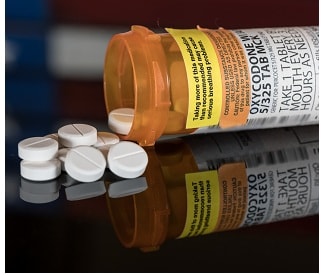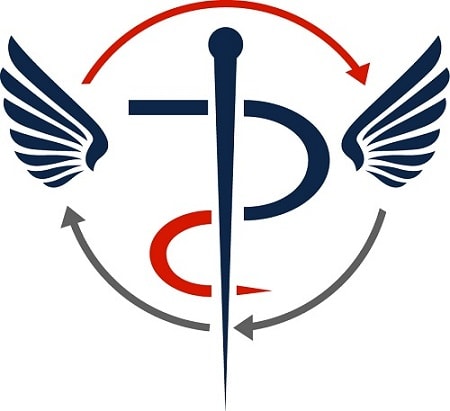Every day, the United States loses 116 lives to the opioid epidemic.(1) Pharmacists are asking what can be done to combat the opioid epidemic and treat pain effectively.
In the ever-changing healthcare environment, minimizing pain is a top priority, but for over a decade, physicians have relied on opioid medications that put millions of patients at risk.
The economic burden created by the opioid crisis – including healthcare, lost productivity, addiction treatment, and criminal justice involvement – costs the U.S. an estimated $78.5 billion per year. (2)
Education on the state of the opioid epidemic and alternative therapies is a starting point for pharmacists to combat this public health emergency.

How did we get here?
Over 200 million opioid medications were prescribed in 2016, according to the Centers for Disease Control and Prevention. (3)Over-prescribing opioid medications can lead to abuse and addiction in patients. Eighty percent of heroin users reported misusing opioids first.
The late 1990s saw physicians over-prescribing opioid medications when pharmaceutical manufacturers advertised that opioids were safe, non-habit forming, and effective at treating nearly every type of pain.
Patients with post-operative or episodic acute pain were routinely prescribed 30-day supplies of an opioid pain treatment. Having a 30-day supply in the home when the patient may have only needed only a four-day supply created the opportunity forabuse and diversion.It only takes five days to become addicted to opioids, and within 30 days an opioid tolerance can be built. When patients did not use of the entirety of their prescription, they often gave them away, sold them, or simply left them unsecured for use by others. This led to access to opioids in the street, drug dealers answered the demand by securing fraudulent prescriptions.
Until now, alternative drug development efforts have been hampered by “over reliance on poorly predictive animal models, changes in biopharmaceutical industry focus, and perceived regulatory and reimbursement concerns,” according to a 2017 study.(4)
Looking at alternatives
 There are alternatives to opioids that will improve quality of life, and in many cases, prevent tragedy.
There are alternatives to opioids that will improve quality of life, and in many cases, prevent tragedy.
There are options and alternatives for patients and doctors to consider before prescribing an opioid or for patients whose opioid regiment is ineffective or causing harm.
Unfortunately, there’s a myth amongst our own healthcare community that opioids are the most effective treatment for pain.
Many of the 25 million Americans with daily chronic pain are prescribed opioid medications.(5)
The fact is, opioids are only as effective, and in some cases less effective, at treating chronic pain than non-opioid treatments. A year-long clinical trial of 240 patients, published in JAMA this March, found that the use of opioid vs. non opioid medication did not result in significantly better pain-related function.(6)
Reliance on opioid medications not only puts patients at risk, but capitated risk contracts are increasingly holding physicians and pharmacists responsible for health outcomes. Careful monitoring of patient adherence to pain management plans is more important than ever.
With individualized services and emphasis on education, pharmacists can provide patients pain management that allows them to live normal lives, without the associated risks of opioid medications.
The following therapies are opioid alternatives for pain management:
- Compounded medications
Many physicians and patients don’t know that NSAIDs such as naproxen, ibuprofen, and diclofenac, alone or in combination with topical analgesics and/or anti-depressants, are equally if not more effective at treating both acute and chronic pain in many instances. Compounded medication can be used for pain resulting from surgery or flare-ups. - Topical treatments
Topical treatments can eliminate the need for oral medication and provide localized pain relief for the patient.By putting one or more analgesic ingredients in a topical cream, direct nerve penetration can occur to the site of injury for systemic absorption. Topicals are also useful in controlling the rate of absorption. Active ingredients such as lidocaine, benzocaine, and tetracaine can be absorbed through the eyes, inner cheek, and skin. Biotechnology companies are developing innovative topical treatments for chronic conditions like glaucoma. - Nerve pain modifiers
Nerve pain modifiers are typically used in compounded creams or gels, pain modifiers are helpful in treating neuropathic nerve pain symptoms like tingling, shooting pains and hypersensitivity, from conditions like shingles and diabetes. Medications such as gabapentin, ketamine, and clonidine calm nerves and some prevent seizures. - Muscle relaxants and Corticosteroids
Muscle relaxants ease pain and promote movement, aiding with common back pain and muscle spasms. These medications, including cyclobenzaprine and baclofen, can treat pain related to multiple sclerosis and musculoskeletal conditions.
Corticosteroids suppress the immune system and inflammation, which can reduce pain from conditions like arthritis. Hydrocortisone, dexamethasone, and triamcinolone have been used for pain relief.
What more can be done?
 The U.S. Department of Health and Human Services (HHS) determined five priorities to combat the opioid crisis: improving access to treatment and recovery services, promoting use of overdose-reversing drugs, strengthening our understanding of the epidemic through better public health surveillance, providing support for cutting-edge research on pain and addiction, and advancing better practices for pain management.
The U.S. Department of Health and Human Services (HHS) determined five priorities to combat the opioid crisis: improving access to treatment and recovery services, promoting use of overdose-reversing drugs, strengthening our understanding of the epidemic through better public health surveillance, providing support for cutting-edge research on pain and addiction, and advancing better practices for pain management.
The National Institute of Health’s HEAL Initiative Research Plan, released in April 2018, found that pain management can be enhanced with further research to understand the biological underpinnings of chronic pain and identifying specific patient bio markers.
Pharmacists and pharmacies are in the best position to know the patient. Patients may have many doctors, but usually will rely on a single pharmacy. The DEA, prior to licensure, provides instruction on common procedures to evaluate patients’ health situations especially those who present with pain management prescriptions. To combat over-prescribing of opioids, pharmacists can play a vital role in communicating with patients and assessing direct sources of pain. By identifying the source (bone, muscle, nerve, inflammation, etc.), and understanding the patient’s medical and drug history, pharmacists can begin to make recommendations to physicians for appropriate pain management alternatives.
While physicians are often unaware of a patient’s home life, caregiver situation and adherence to drug regimens, pharmacists can bridge the gap with in-home evaluations of risks and obstacles.
It’s imperative that physicians and pharmacists stay up-to-date on current best pain management medicinal therapies, and custom compounds therapies that address pain inducing ailments from fibromyalgia and diabetic neuropathy to back injury and arthritis.
Pharmacists can further combat the opioid epidemic by educating patients and physicians with the most current pharmacological information, and by conducting training in pain management and alternative therapies.
Opioids may still be necessary in some cases but should generally be avoided whenever possible. Through communication, outreach, and education about alternatives for pain management, pharmacists can move toward a healthcare industry that is less dependent on opioid medications.
References
1. U.S. Department of Health and Human Services, What is the opioid epidemic? https://www.hhs.gov/opioids/about-the-epidemic/index.html
2. Florence CS, Zhou C, Luo F, Xu L. The Economic Burden of Prescription Opioid Overdose, Abuse, and Dependence in the United States, 2013. Med Care. 2016;54(10):901-906. doi:10.1097/MLR.0000000000000625.
3. Centers for Disease Control and Prevention, U.S. Prescribing Rate Maps https://www.cdc.gov/drugoverdose/maps/rxrate-maps.html
4. Yekkirala AS, Roberson DP, Bean BP, Woolf CJ. Breaking barriers to novel analgesic drug development. Nature reviews Drug discovery. 2017;16(8):545-564. doi:10.1038/nrd.2017.87.
5. Dowell D, Haegerich TM, Chou R. CDC Guideline for Prescribing Opioids for Chronic Pain — United States, 2016. MMWR Recomm Rep 2016;65(No. RR-1):1–49.
6. Krebs E, Gravely A, Nugent S. Effect of Opioid vs Nonopioid Medications on Pain-Related Function in Patients With Chronic Back Pain or Hip or Knee Osteoarthritis Pain. JAMA. 2018;319(9):872-882. doi:10.1001/jama.2018.0899

















![Sirio Launches Global Research Institute for Longevity Studies [SIA]](https://www.worldpharmatoday.com/wp-content/uploads/2019/09/Sirio-218x150.jpg)



